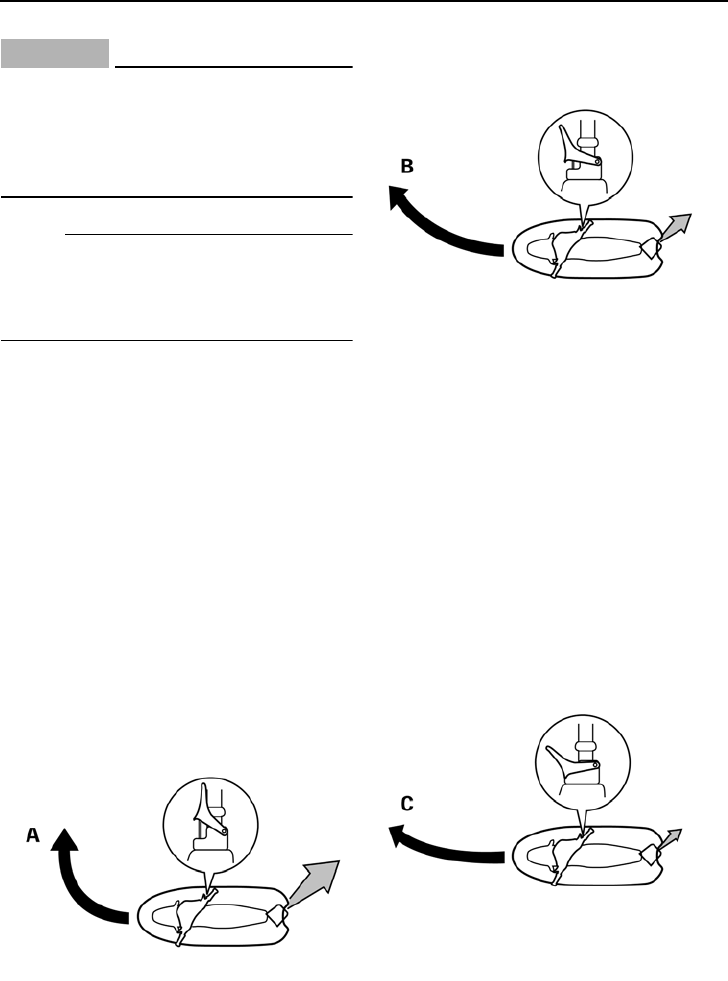
Operation
81
CAUTION:
ECJ00550
Do not operate the engine at full throttle
for at least 1 minute after the engine has
been restarted. Excessive water in the
bilge can splash into the engine, which
can result in severe damage.
N
O
TE:
To efficiently discharge water from the engine
compartment, operate the watercraft as
straight as possible and above planing speed
for at least 2 minutes.
EJU33250
Turning the watercraft
Steering control depends on the combination
of handlebar position and the amount of throt-
tle.
Water sucked in through the intake grate is
pressurized by the impeller in the jet pump. As
the pressurized water is expelled from the
pump through the jet thrust nozzle, it creates
thrust to move and steer the watercraft. The
higher the engine speed, the more thrust pro-
duced.
The amount of jet thrust, in addition to the po-
sition of the handlebars, determines how
sharply you turn.
A. More throttle produces higher thrust, so
the watercraft will turn more sharply.
B. Less throttle produces lower thrust, so
the watercraft will turn more gradually.
C. Releasing the throttle lever completely
produces only minimum thrust. If you are
traveling at speeds above trolling, you will
have rapidly decreasing ability to steer
without throttle. You may still have some
turning ability immediately after releasing
the throttle lever, but once the engine
slows down, the watercraft will no longer
respond to handlebar input until you ap-
ply throttle again or you reach trolling
speed.
At trolling speed, the watercraft can be
turned gradually by handlebar position
alone using just the amount of thrust
available at idle.
UF1W10E0.book Page 81 Monday, November 26, 2007 3:57 PM


















